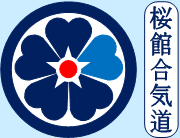About Aikido
What is Aikido?

The Founder of Aikido, Morihei Ueshiba
Master Ueshiba (pronounced 'oo-eh-she-ba') was born in 1883 in a Japan that had not fully emerged into the modern world and where many of the martial arts were still taught by masters in the old tradition. In his early adulthood he mastered several martial arts including swordsmanship and various forms of unarmed self-defence. At the same time he developed into a deeply religious person and envisaged a new system of budo (the way of the warrior) which would provide a basis for both physical and spiritual development. This he named Aikido: the way (do) of harmonising (ai) the spirit (ki).
By ki is meant the creative, life spirit of the universe; one's own life energy. "True Budo is the way of great harmony and great love for all beings" wrote Ueshiba. That he meant Aikido to be much more than a method of self defence is conveyed in his words "I want considerate people to listen to the voice of Aikido. It is not for correcting others; it is for correcting your own mind".
The Principles of Aikido
Aikido is a weaponless system designed solely for self-defence. It is essentially non-violent and non-competitive. Force is never opposed using force. By means of spherical movements, an attacker's force is diverted and turned back upon him. In addition to throws (nage-waza) to bring the assailant to the ground, there is also a variety of joint locks (katame-waza) for controlling the attacker; but though these can be painful and induce immediate submission, they are applied so as not to cause injury. Aikido is perhaps the most subtle and graceful of the martial arts. Since its techniques do not demand physical strength or aggressive spirit, Aikido is practised by people of all walks of life.

Kanetsuka Sensei performing Kote-Gaeshi technique
The Benefits of Aikido Practice
Since Aikido is based on full and natural body movement, it exercises every limb and joint of the body. Flexibility, muscle tone, coordination, and quick reactions are all developed. It does not demand unnatural body-building preparation, but is an absorbing way to keep fit along natural lines and within a framework of aesthetic movement.
As we get older we lose the flexibility of our joints. Aikido is an excellent way of restoring and preserving a supple healthy body. Moreover, there should be enough expenditure of energy in an Aikido practice to stimulate the heart and give it plenty of exercise.
Aikido is essentially a method of self-defence, so that through regular practice one will acquire a sound basis of agile movement and speed of reaction which should prove useful if the occasion ever demanded it in real life.
In common with other oriental philosophies (and indeed with modern science) Aikido teaches that there is no real seperation between that which is mind and that which is body. In subjecting our bodies to the precise discipline of Aikido we may eventually influence our minds for the good: creating an inner calm and balance that may be carried into our daily lives, helping us to become better and more effective people.
The Aikikai Foundation

Doshu Moriteru Ueshiba
The Aikikai Foundation, officially recognized by the Japanese government in 1940, was founded in order to preserve and promote the ideals of the true Aikido created by the Founder. As the Aikido World Headquarters (located at the Hombu Dojo in Tokyo), it is the parent organization for the development and expansion of Aikido throughout the world.
After the Founder's passing in 1969, his son Kisshomaru Ueshiba was inaugurated as Aikido Doshu. At present, Moriteru Ueshiba, grandson of the Founder, has succeeded his father as Aikido Doshu.
